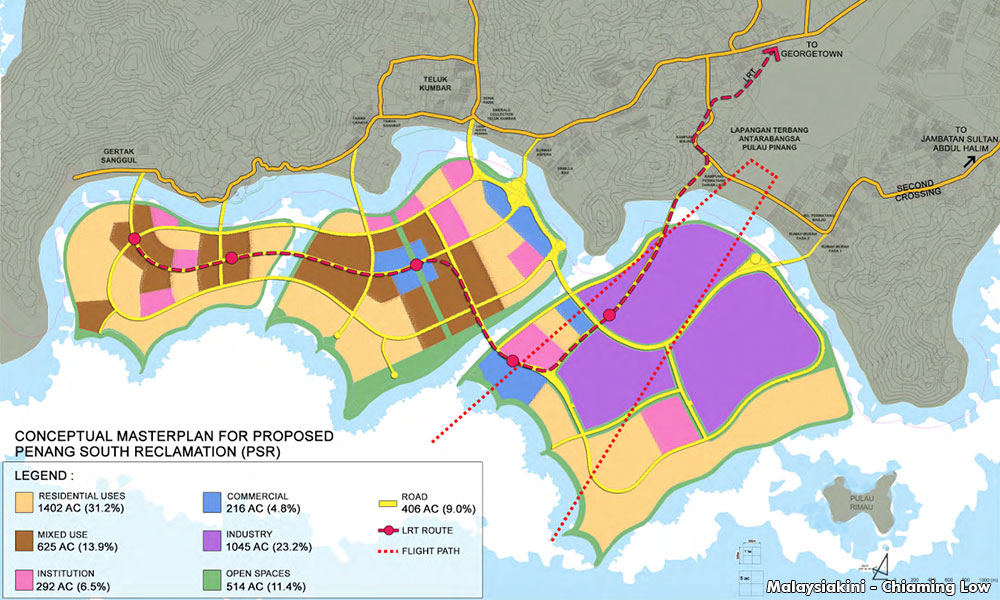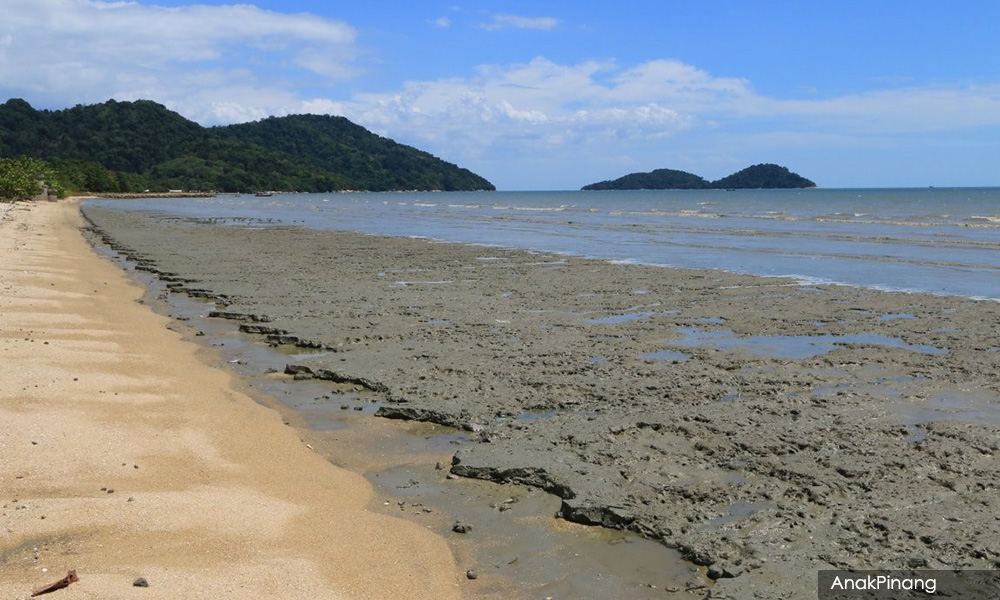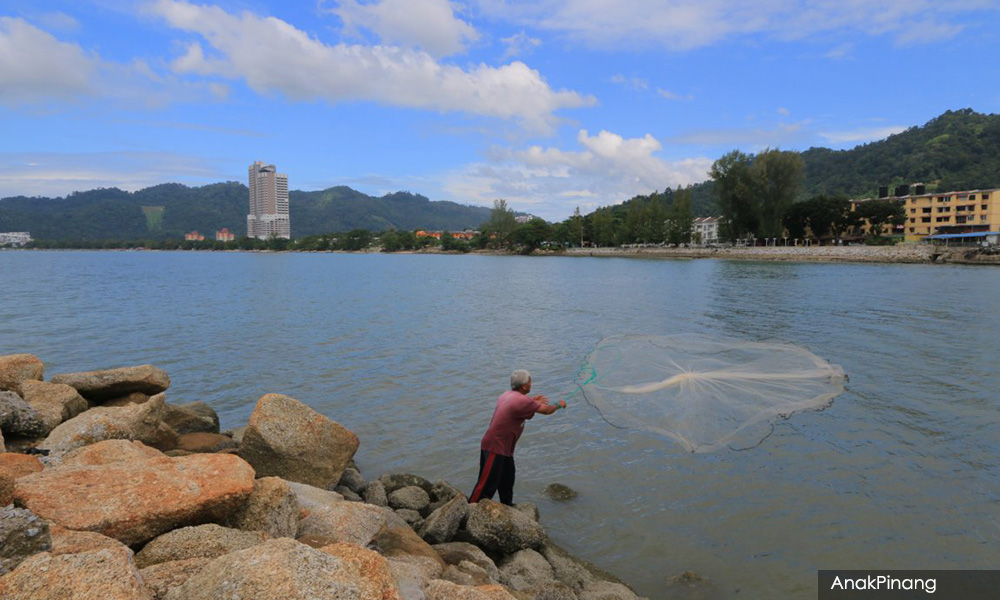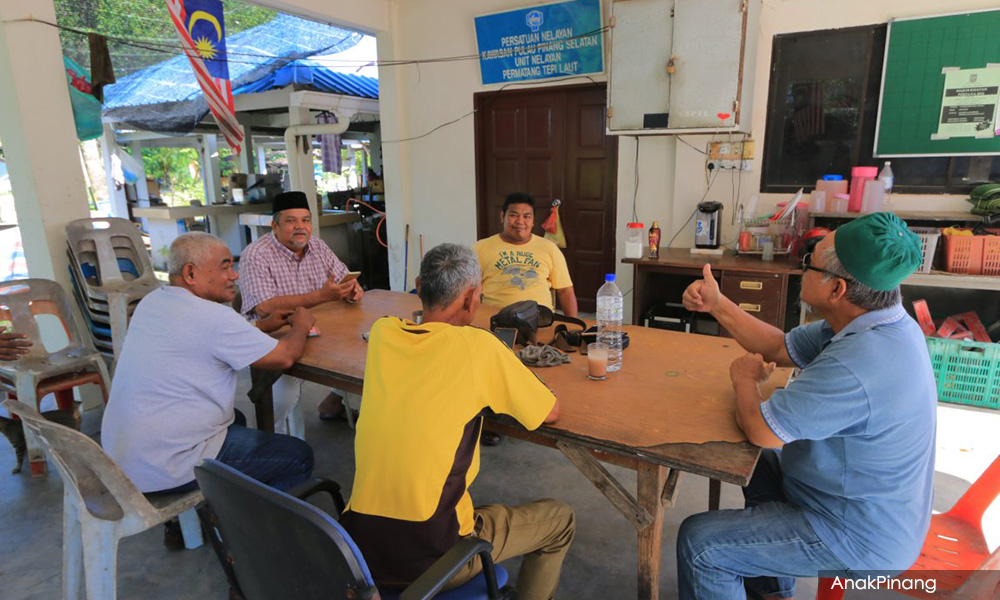
Today, I write to you from the coastline of Permatang Damar Laut, in Bayan Lepas. Yup, I am on a reconnaissance field trip, to check out the sites of a mammoth land reclamation called the Penang South Reclamation scheme (PSR).
Recently, the Penang State Government announced plans to initiate reclamation on the south side of Penang Island. The scheme involves creating three manmade islands off the southern coast spanning Permatang Damar Laut, Teluk Bayu, Sungai Batu, Teluk Kumbar and Gertak Sanggul.
As with all mammoth projects, the scheme does not escape opposition. On the other hand, being one who understands the benefits of this scheme, I would like to share with you, so that you too can have a clear understanding of the rationale behind this scheme.
The Penang state government cannot materialise money from thin air. What it receives only covers that basic necessity for the people. To have more money - to pay for things like a new highway or a new LRT line - it first has to create for itself a new revenue stream.
The Penang government is aware that the amount of land that can be developed on Penang Island is depleting. That itself creates both a concern and an opportunity. Such opportunities present themselves only to cities that are islands, for they can create new land which will become a much-needed revenue generator in years to come.
The plan involves creating up to three islands, which will provide the state government with as much as 1,800 hectares of land that it will own. This land can then be slowly sold for development as and when the need arises. On top of that, 30 percent of the land will be set aside for public housing, to provide houses for common Penangites.

The Penang state government does not intend to sell off all that land at once. Doing so will have a huge negative impact on land prices in Penang. Some of the land will be sold, some will be used by the state government for the people such as creating public space for Penangites. Selling the land gradually serves as a mechanism to ensure property prices in Penang can be controlled and does not steeply increase.
To put it bluntly, if we want our future generations to afford Penang property, it is in our own interest to support our state government's initiative in putting this price stability mechanism in place.
Those who are too lazy to understand this rationale often say, "If Penang Island runs out of land, why don't we develop Penang mainland? It has plenty."
Such a remark disregards the objective, how does that create a revenue stream for the state government? Penang mainland may have a lot of land, but if it does not belong to the state government.

Pillboxes still remain
Now that we understand how the Penang South Reclamation Scheme will benefit the state government, it is also necessary to be aware of the environmental and social impact this mammoth scheme will have on Penang and its people, especially those staying along the southern coast. And to best understand this, I visited the places involved.
Permatang Damar Laut is an area on the south side of the Penang International Airport. While it is part of Bayan Lepas, it is composed of several kampung including Permatang Tepi Bendang, Permatang Tepi Laut and, of course, Permatang Damar Laut proper.
In the 1970s, the Penang International Airport underwent a major expansion. The extension of the airport runway resulted in the relocation of the villagers of Permatang Damar Laut by a few hundred meters. The only trace of that village is its village cemetery, now an "island" surrounded by airport land. Jalan Permatang Damar Laut cuts right through the airport land.
In the subsequent decades, the paddy fields in the area were developed, and the village of Permatang Tepi Bendang became expunged. To the west side of the airport land is the village of Permatang Tepi Laut. Today, it is the only intact settlement in Permatang Damar Laut that has neither been relocated or expunged.

Sungai Permatang Damar Laut flows beside this small fishing village, which has its own little fishermen's jetty. The coast has a muddy bottom, and at times, you can see mudskippers. During the Second World War, the British built small batteries, colloquially known as pillboxes, the relics of which can still be seen on the coast.
During my visit to Permatang Tepi Laut, there were a few villagers sitting around a table, at the local fishermen's hall. I got into a conversation with them. Friendly rural folks, they asked me if I were a reporter. I told them I am exploring the area to know more about it.
I asked them about the neighbouring village of Permatang Damar Laut, which was relocated in the 1970s. The villagers told me that those people were lucky because as a result of the compensation, the relocated folks received a proper plot of land with brick houses to replace their wooden village houses. In comparison, they were "not that lucky" because their village, Permatang Tepi Laut, did not have to relocate.
I did not inform the villagers that in the future, they, too, might have to relocate if their village is in the path of the Bayan Lepas LRT. (Yes, the LRT will pass through here on its way to the first of the three reclaimed islands. The exact path of the LRT line, I do not yet know.) But if that were true, I believe they would welcome the idea, for finally, they could enjoy the compensation received by neighbouring Permatang Damar Laut a few decades earlier.

Remain watchful
Careful not to plant words in their mouth, I asked if they were aware of the plans to reclaim land off the coast. Yes, they were aware but didn't seem perturbed by it. In fact, based on the benefits received by neighbouring Permatang Damar Laut decades ago, the people I spoke to at Permatang Tepi Laut seemed to welcome the change.
As I chat with them, these villagers came across as admirably resilient and pragmatic and more welcoming of progress than we often give credit to rural people. I realise that quite often, villagers who oppose the government's plans are those who have words planted into their mouth by outsiders who derail the government's plans for their own malicious motives.
As Penang urbanises, the remaining rural pockets may have to undergo change, something that many villagers have come to accept. Change was already happening in places surrounding Permatang Tepi Laut - in Batu Maung, in Teluk Kumbar, in Bayan Lepas, so it is only a matter of time before it arrives at this sleepy hollow.
AnakPinang understands the necessity of the Penang South Reclamation scheme. The funds it generates can be applied to the improvement of our infrastructure, particularly the Penang Transport Master Plan, which leads to a better life for all of us. In addition to that, enlarging our state land bank will help prevent property prices from drastic overheating.
Nevertheless, we will remain watchful and will impress on the state government that the common people impacted by the Penang South Reclamation scheme benefit rather than suffer. After all, what purpose a scheme if it doesn't benefit the people?

Often, people who can not articulate their plight have their well-being overlooked. At AnakPinang, we want to ensure that those impacted will not be adversely affected while those not directly impacted will be able to see and enjoy the benefits.
It is, therefore, a necessity for us to understand the change the villagers have to undertake, and in our most sympathetic manner, ensure that the transition involved will be handled with the greatest of care. There are times we cannot avoid progress but neither should we become casualties of it.
TIMOTHY TYE is spokesperson for Penang-based civil group AnakPinang. He authors Penang Travel Tips and served as council member for the Penang Heritage Trust from 2005 to 2011.



No comments:
Post a Comment
Note: Only a member of this blog may post a comment.